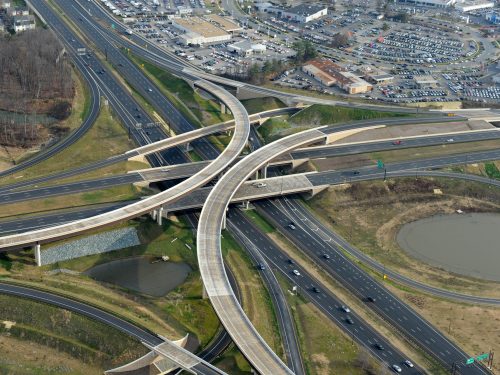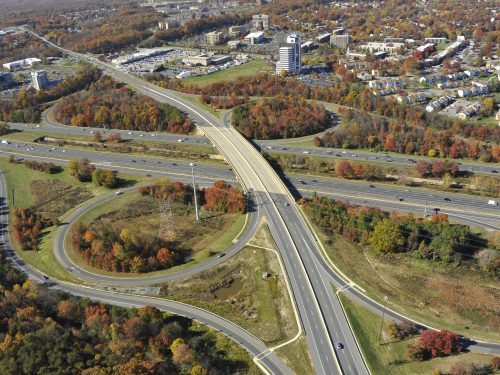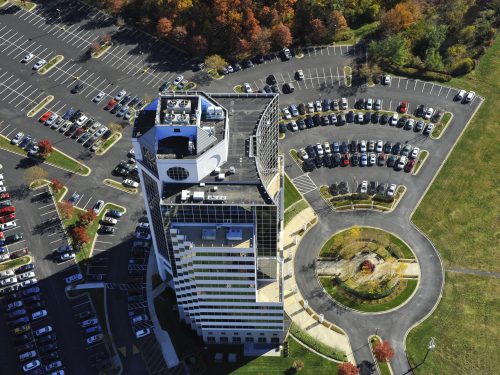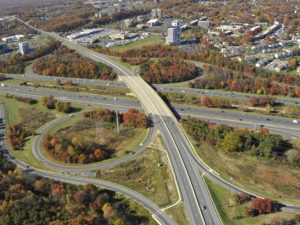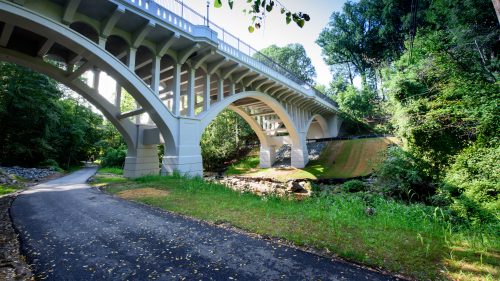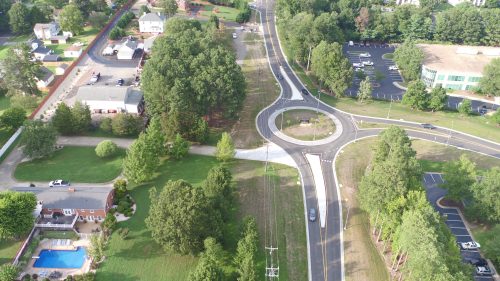InterCounty Connector (ICC) Contract C
InterCounty Connector (ICC) Contract C
This project, one of the largest design-build contracts in Maryland, included 3.8 miles of new roadway, MD 200, to accommodate three highway lanes in each direction from west of US 29 to east of I-95. Three new interchanges were designed: at MD 200/US 29, MD 200/Briggs Chaney Road, and ICC/I-95. The work also included the reconstruction and widening of 1.3 miles of US 29 from south of Briggs Chaney Road to south of Fairland Road and the reconstruction of 1.9 miles of collector-distributor roads along I-95 from south of MD 198 to north of MD 212.
The design of more than 50 structures, including bridges, culverts, retaining walls, and noise barriers, was led by a Lead Structures Engineer from JMT. This work included designing toll gantries, sign structures, and high mast light poles; and coordinating with four design consultants, as well as liaison between the design team and Maryland State Highway Administration (MSHA), Maryland Transportation Authority (MDTA), and the contractor.
JMT’s design work included six bridges, three noise barriers, and 14 retaining walls. The bridges included both steel girder and concrete beam superstructures ranging from a 75-foot simple span to a five-span, 1,218 foot curved girder structure. Multiple plan packages were provided to facilitate early construction activities such as pier footings and ordering of long lead items such as structural steel. The bridges, retaining walls, and noise barriers included many different aesthetic features unique to the project.
Water Resources: JMT provided H/H studies, analysis, and design; open and closed storm drain design; SWM and ESC analysis, computation and design; H/H, SWM and ESC plans, reports and permits; and consultation during construction for the MD 200 (ICC “C”) mainline between the US 29 and I-95 interchanges as well as the Briggs Chaney Road interchange and the Old Gunpowder Road crossing. The SWM and ESC plans were developed to allow multiple phases to reduce areas of earth disturbance while allowing the contractor to meet the schedule of activities throughout the project limits. The ESC plans were coordinated with the MOT plans and utility relocations to facilitate construction activities. JMT provided detailed H/H design and scour analysis for Little Paint Branch, an environmentally sensitive stream. JMT performed H/H design for a temporary bridge crossing to be used as part of a haul road during construction. JMT coordinated the designs with the MSHA, the ICC Project Team, and the Maryland Department of the Environment (MDE) and performed much of the design at the “Hub Office” facilitating the “over the shoulder” review process. JMT obtained MDE permits and approvals (and related modifications) from the MDE for the stream crossings, ESC, and SWM.
Traffic and ITS: MD 200 is operated as a toll facility. JMT provided the Lead ITS/ETC Engineer who led the design of the electronic toll collection (ETC) system and the traffic management system for the project. The systems includes CCTV surveillance; Dynamic Message Signs (DMS), toll rate information signs (static panels with DMS inserts), ETC toll gantries, and the communication systems required to connect the field equipment to the central operations center. Work included coordination between the design team, MSHA, MDTA, and the ITS/ETC integrator to ensure compatibility and consistency with the overall ICC toll system.
Electrical: JMT provided lighting design for the entire project. Both the US 29 and Briggs Chaney Road interchanges were designed for low level lighting using standard and decorative poles and fixtures. Along I-95, high mast lighting was utilized consistent with other areas of I-95. The high mast lighting design included the MD 200/I-95 interchange as well as the interchanges at I-95/MD 212 and I-95/MD 198. The work also included design of the power supply system for all lighting, toll gantries and signing on the contract. This required constant coordination with two utility companies for the many power drops located throughout the project limits.
